#midori ito
Explore tagged Tumblr posts
Text
Midori Ito at the 2023 International Adult Figure Skating Competition
She’s 53, she’s amazing and she radiates joy ✨✨
(She won btw)
7K notes
·
View notes
Text
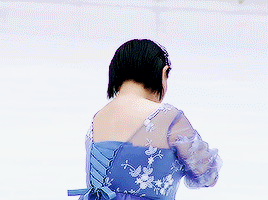
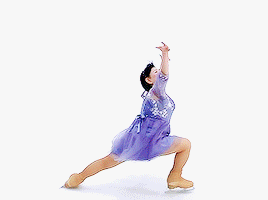
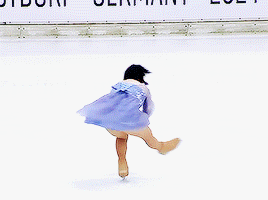
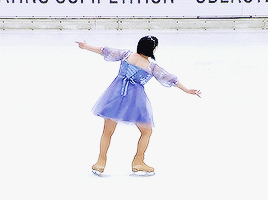
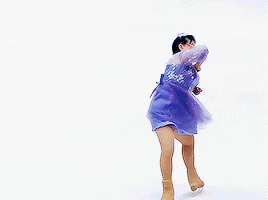
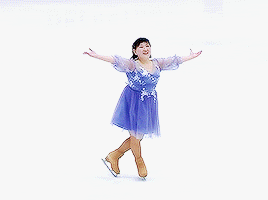
Midori Ito: Aqua » 2024 ISU Adult Skating Competition
#midori ito#fskateedit#figure skating#isu adult competition 2024#program#her smile ;;;;;#this is love...
571 notes
·
View notes
Text
Thanks to reddit user kemmes7 for this video of Midori Ito continuing to be amazing on ice at age FIFTY FOUR
(International adult figure skating competition in Oberstdorf 2024)
41 notes
·
View notes
Text
Fun With Jump Arm Variations
When jumping, different skaters put their arms in different places, but generally they are pressed flat against the torso, especially on higher-revolution jumps. This compressed shape increases the skater’s rotational speed, which is important for attempting triples and quads.
But as anyone who has watched much skating has seen, you can jump with your arms in different positions, too. There are two main arm variations you will see in modern skating programs:
One arm above the head - these are nicknamed ‘tanos’ after Brian Boitano, who did not invent but did popularize the variation. Ones where the arm is bent a lot may be derisively nicknamed ‘helicopter tanos’, as some fans don’t like how they look. (Brian Boitano 1988 Olympics SP, Brian Orser 1988 Olympics SP, Petra Burka 1965 FS, Wendy Burge 1976 Olympics FS, Ekaterina Kurakova 2022 Euros FS)


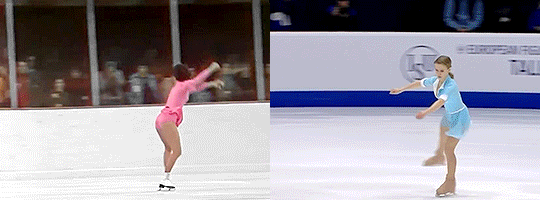
Two arms above the head - these are nicknamed ‘rippons’ after Adam Rippon, who also did not invent them but popularized them when he started doing it on his lutz. (He did tanos on it for a while, but then started using both arms when he trained with Brian Orser, because he felt bad doing ‘tanos’ in front of Orser, who famously took silver behind Boitano at the Olympics.) (Adam Rippon 2016 GP France FS, Midori Ito 1988 Olympics SP, Ting Cui 2018 JGP Ostrava SP, Sihyeong Lee 2021 Nebelhorn FS)


However, there are also other arm variations. These are all rare nowadays, although if you watch older programs, you are more likely to spot a variation that’s not a tano or rippon. Ones I’ve seen include:
Hands on hips - these used to be much more popular back in the day but have fallen out of fashion. I would guess it’s because they slow down rotational speed too much, as every one I have seen is a double except this one by Michael Chack, but I don’t know for sure. (Jill Trenary 1990 Worlds FS, Michael Chack 1992 USNats FS, Rory Flack 1988 USNats SP, Tonia Kwiatkowski 1988 USNats SP, Midori Ito 1987 Worlds SP, Anna Kondrashova 1988 Olympics SP, Yuzuru Hanyu 2010 JPNats FS)

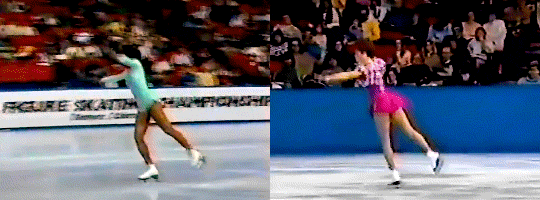

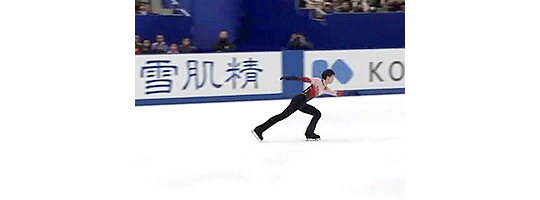
Helicopter arms - this one has been used as a warm-up by Yuzuru Hanyu, and I’ve spotted it in competitions a couple of times with single and double jumps (Rory Flack 1994 US Open Artistic Program, Yuzuru Hanyu 2012 Finlandia Trophy SP warmup)

Arms behind back - I’ve only seen this one performed by Jason Brown in his Riverdance program, where depending on the event he placed either one or both arms behind his back during the second jump of this combo (2013 SA FS, 2014 Nats FS)

Arm switching midair - I’ve only seen this one in this lovely axel variation by John Curry (1976 Olympic SP)
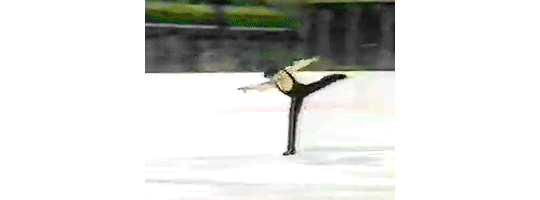
Hands by the head - I believe I may have seen this used by at least one other skater, but the only example I have at hand is this one by Nancy Kerrigan (1990 Goodwill Games SP)

Beginning in 2009, ��varied position in the air’ became a positive GOE bullet point for jumps. This was because they are supposed to add to the difficulty of a jump, although I’ve seen arguments back and forth from skaters about how true that is for some arm positions (and even if which arm is raised makes a difference for tanos). Years later, they exploded in popularity, particularly in the women’s competition. The trend had its beginning around 2014 or so; the previous season, junior World medalists Evgenia Medvedeva and Serafima Sakhanovich were given programs constructed to include raised arms on a couple of jumps, which wasn’t too unusual, but in 2014, their programs contained many more of them. Medvedeva would go on to dominate the senior circuit for several years and notably used raised arms on most of her jumps during that time, which started the trend in earnest among other skaters.
This GOE bullet point was removed for the 2018-2019 season. But if arm variations no longer get that bit of GOE, why do we still see them so often? There are probably a few reasons:
Skaters who trained them for GOE a few years ago got used to doing them that way and don’t want to mess with their muscle memory
They can add to a program aesthetically
Skaters and their teams may still hope to impress the judges by using them
Skaters have said that rippons help straighten their jump axis
I’ve also seen speculation that rippons can be used to help muscle jumps using the upper body in some cases
I would also like to shout out arm variations on jump exits that aren’t the standard check-out position. These aren’t as common as mid-air variations nowadays and rarely get talked about as their own thing - probably in part because they were never a GOE bullet - but they can add difficulty to the exit as well as give a nice choreographic touch to a program. You can see a few in the above gifs, but here’s a few more:

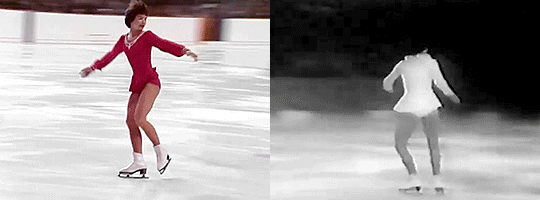
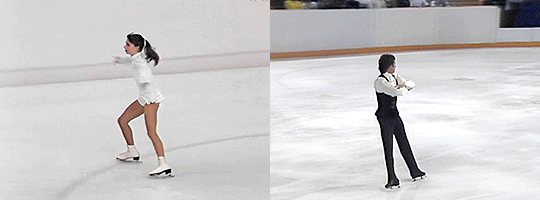
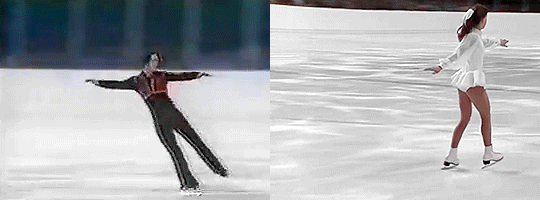
(Petra Burka 1965 Worlds FS, Yuzuru Hanyu 2021 “White Nights” EX, Anett Pötzsch 1976 Olympics FS, Hana Mašková 1968 Worlds FS, Claudia Kristofics-Binder 1976 Olympics FS, Brian Boitano 1988 Olympics SP, Vladimir Kovalyov 1976 Olympics SP)
#figure skating#fskateedit#fs history#Yuzuru Hanyu#Midori Ito#Brian Orser#Brian Boitano#Jason Brown#John Curry#Adam Rippon#Rory Flack#Ekaterina Kurakova#gifs#I went kind of crazy on the gifs here#long post
209 notes
·
View notes
Text
Midori Ito, Dynamo 2024
youtube
17 notes
·
View notes
Text

2 notes
·
View notes
Text
youtube
#midori ito#man do i wish i understood japanese rn#one thing's for sure: she's absolutely amazing#figure skating#Youtube
25 notes
·
View notes
Text



The best dress in skating.
1 note
·
View note
Text
I recently finished Love Sickness series by Junji Ito and it's like- look i completely understand where Ryuusuke is coming from, hell if something like that happened to me as a kid, i would be wrecked with guilt too, i do not blame him! but it's also like
why is a grown ass adult woman trauma dumping and asking advice from a bloody 8 year old??? Girl be serious
#Junji Ito#Lovesickness#I don't want to be too harsh on Midori's aunt cause I do love a ghost haunting the narrative and she was kinda going Through It#But also like#Also did she even know the guy she was dating was married before getting pregnant? Cause girl#I feel like this is a series I need to re-read and marinate in#I have much to think about this#My main takeaway is that this series is about people's desire and need for support and just wanting to talk about their problems#And how isolating it all can be#So much of Ryuusuke's problem is that he could not face his grief head on. Couldn't even talk about it#And by the time he did it was already too late#The moment he decided to confront he literally become the anti-thesis of the Bishounen#Hence why at the end he was able to bring peace to those dead girls and all those he met#It's not about what he said. It's about the fact that he acknowledged them and their feelings and told them what they wanted to hear#(I guess. I think I need to reread it again and also watch explanations on it)#empty thoughts
1 note
·
View note
Note
For tcg cards: fave garchomp line ones?
you know what's weird? i actually haven't done any of the pseudo-legendaries yet.
let's fix that.
FULL TCG RANKINGS MASTERPOST
10. Gabite (illus. Midori Harada, XY BREAKpoint 69/122)

9. Gible (illus. sowsow, Sword & Shield - Brilliant Stars 106/172)

8. Gible (illus. sui, Black & White - Legendary Treasures 94/113)

7. Garchomp & Giratina GX (illus. Mitsuhiro Arita, Sun & Moon - Unified Minds 146/236)

6. Gabite (illus. Tomokazu Komiya, Platinum - Supreme Victors 59/147)

5. Garchomp (illus. TOKIYA, XY BREAKpoint 70/122)

4. Garchomp EX (illus. Oswaldo KATO, Scarlet & Violet - Paradox Rift 245/182)

3. Gible (illus. Asako Ito, Sun & Moon - Unified Minds 112/236)

2. Garchomp & Giratina GX (illus. Anesaki Dynamic, Sun & Moon Promo #193)

1. Garchomp V (illus. Taira Akitsu, Sword & Shield - Astral Radiance TG23/TG30)

85 notes
·
View notes
Text
Midori Ito 1992 Albertville Olympics Exhibition (USTV)
youtube
Featuring: singing under the rain and under the rainbow.
2 notes
·
View notes
Note
Hey elle! Do you have a list of all bm characters? Im just curious to see how many of them i know
let me see if I can list them by memory 😭
Loretta
Gabriel
Melanie
Amara
Sasha
Elise
Roman
Raquel
Mina
Chloe
Kiana
“Madame” Ophelia
David
Mira
Harmonia
Dahlia
Kim
Jane of Organa
Bliss
Flos
Amira
Heath
Reina
Flores
Julius
Willows
Mar
Serene
Cordelia
Gael
Leo Keye
MAIDA (omg I almost forgot)
Cora
Orion
Alula
Lady Eleanor
Novanné
Ermine
Vair
King Alexandre
Hypatia
Marlas
Calix
Naomi
Louis
Guinevere
Midelle
Mūka
Michelle
Maria Dalma
Antonio Dalma
Gold Aveline
Hana Phan
Alice Welton
Beatrice Welton
Vittoria Welton
Andrew Welton
Timothy Welton
Illame
Aranya
Mori
Yukta
Oliver x2
Jane of Gunua
Quinn
Lilith Blackwell
Fleur
Sol
Noa Ito
May Ito
AURORA
Nefertari
Claudia
Ian
James
Tsai
Roxanne
Anne Port
Isabella of Scaylum
Croix
Mai
Lady Starius
Emiko Ito
Midori Ito
I THINK THATS EVERYONE
43 notes
·
View notes
Text
ISU released an article about Shoma
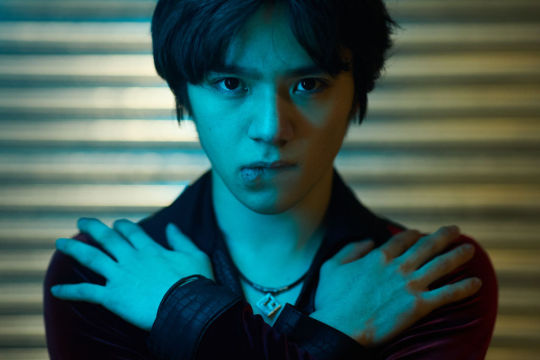
Two-time ISU World Champion and three-time Olympic medalist Shoma Uno of Japan has announced his retirement from competitive skating after a long and distinguished career and is ready to open a new chapter in his life.
“I have decided to retire from active competition,” Uno wrote on Instagram. “I am very grateful to have been able to continue skating for 21 years since I was 5 years old, and to have had a wonderful athletic life.”
The Japanese star will talk in more detail about his retirement and future plans in a press conference scheduled for May 14.
The 26-year-old looks back at a career with many highlights and also difficult times, but he always came back, proving his talent and showing resilience. When five-year-old Shoma went to the ice rink in his hometown of Nagoya with his father to have fun, he had no idea that he would become a World Champion, Olympic medalist and super star of the sport. He only knew that the enjoyed skating and kept coming back to the rink, taking lessons. He trained with Machiko Yamada, the coach of Japanese skating icon Midori Ito and also with Mihoko Higuchi for many years and worked his way up in the skating world.
Uno debuted in the ISU Junior Grand Prix in 2011 and was so tiny that he was unable to look over the boards. He won a few medals on the Junior circuit but his breakthrough came in what was his last Junior season in 2014/15 when he qualified for the first time for the ISU Junior Grand Prix Final where he claimed gold. Shoma went on to take the ISU World Junior title in 2015, in what was his fourth and final appearance at the event (climbing from 10th in 2012, 7th in 2013 and 5th in 2014).
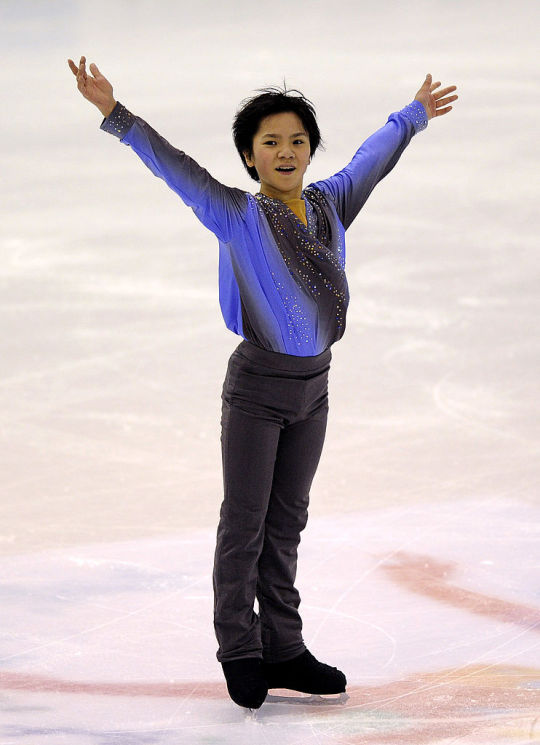
Once at the senior level, Uno quickly became one of the top Skaters in the World. In his World debut in 2016 he placed 7th but then the next year won silver, his first of a total of four World medals. In his first Olympic Winter Games in 2018, Shoma skated off with the silver medal and returned on to the Olympic podium four years later, earning the bronze. In 2022 and 2023 Uno crowned himself ISU World Champion.
However, in between there was a time of struggle. In the 2019/20 season, for the first (and only) time in his career, Uno finished off the podium in the ISU Grand Prix Series. He had left his coaches since childhood and struggled with confidence.
“At first, to be honest, I was thinking about finishing my career,“ he said in an interview at Skate America 2021 about this time.
“I did not know how much longer I would keep going. But imaging the end (I thought) maybe I'll enjoy the rest of this career as an athlete.“
Uno started to work with two-time World Champion Stéphane Lambiel as his coach and choreographer in fall 2019 and soon came back strong. He grew as an athlete and a performer with beautiful programs that highlighted his versatility: “Turandot” (Free Skating 2017/18), “Great Spirit” (Short Program 2020/21), “Bolero” (Free Skating 2021/22) and “Spiegel im Spiegel” (Free Skating 2023/24) to name a few.
At the same time, the Japanese star always pushed the limits technically and made history by becoming the first Skater to perform a quadruple flip in competition in 2016.
“When I train and want to become better, it's not good for me to work on what I can already do. If I'm satisfied with just giving 80 per cent, I'm not good. The right training for me is to push my limits,” Uno said in an interview.
The Japanese Skater has an independent mind and a fun personality. He has a Youtube Channel where you can meet his three toy poodles Emma, Baron and Toro.
“When I am on the ice, I am totally focused on my sport, but when I'm off the ice, I am sure most people know I am just a lazy slacker, but I thought that would be a good way to show to the people how I am off the ice, but still this is Shoma Uno,” he explained.
When asked who inspires him the most, Shoma’s surprising answer was:
"Myself. Of course, I think I am inspired by many people and heard some good words from everyone, too, but in the end when you break it down, I do feel that it is myself that inspires me and sadly, I don't listen to anyone. Sometimes I listen, but mostly I go with my own mind,” he added.
For sure Uno will follow his own ideas in the years to come but you can certainly expect to see him gracing the ice in shows for a while.
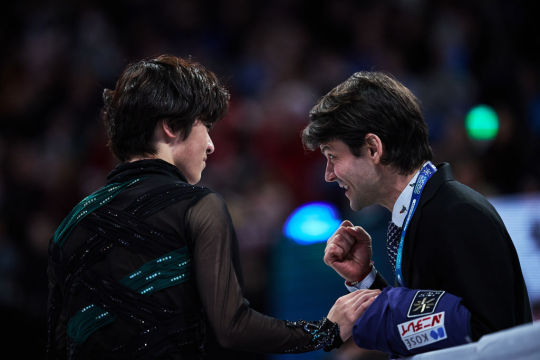
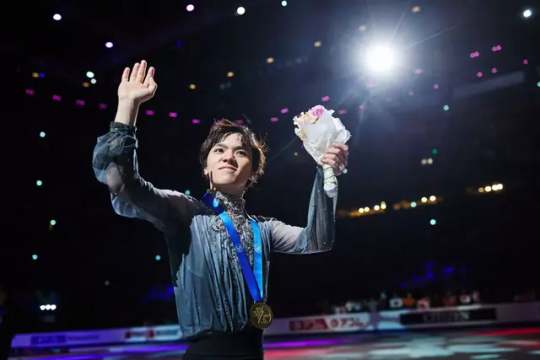
#shoma uno#figure skating#isu#happy retirement shoma#it's a nice article that I think sums up Shoma's career pretty well#also adding links to his Insta and Youtube is a good move as I still think both acc are quite unknown among non-Shoma fans
45 notes
·
View notes
Text
Today’s translation #915
Otomedia 2017/02, Shimizu Youji's interview
Part 1.
-- Your thoughts after you have completed the voice over recording process?
Shimizu: The time of recording of the voice-over for the show, which takes us through the Grand Prix series and toward the Grand Prix Final, coincided with real-world Grand Prix series and that was a strange experience. Actually, I've been watching figure skating for around 30 years, as an ex-figure skater, Ito Midori, is the same age and from the same town as me. This year, I feel as if I also participated in the Grand Prix series, as if I also fought through some kind of fictional Grand Prix series myself (laugh).
-- Please tell us what was the main point in deciding who is going to get the role of the main characters during castings?
Shimizu: Of course, the casting wasn't based on my own opinions only. I've asked Kubo-san and Director Yamamoto and other staff members what they think before deciding, who gets the role. In case of Yuuri, I wanted to give the role to Toyonaga Toshiyuki, as soon as I've heard his voice during the audition. His acting feels very realistic, you can feel the warmth of a real human being in it, and in a good sense, he sounds 'normal'. It doesn't sound flirty on purpose, but you can feel that it's so natural, as breathing. This time, we show the dramas happening in the backyard of figure skating world and very realistic characters, that are fighting tough battles, so I felt that the way Toyonaga-kun says his lines, that makes you feel that it's a human, as real and living as we are, is perfect for that. What I want to say is that Toyonaga-kun didn't try to act the role of a hero. His acting, that was like an extension of his own person, was incredibly good.
15 notes
·
View notes
Text
Naruto (2002) ナルト






Director: Hayato Date Screenwriter: Kishimoto Seiji / Sumizawa Katsuyuki / Takegami Junki Starring: Akira Ishida / Yasuyuki Kase / Romi Park / Shuji Nakata / Soichiro Hoshi / Nobutoshi Kanna / Shinichiro Miki / Hiroki Nakamura / Hiroshi Ienaka / Nobuaki Fukuda / Daisuke Kusunoki / Takako Honda / Hiroaki Hirata / Kenjiro Tsuda / Tomohiro Tsuboi / Tomoyuki Kono / Keiko Nemoto / Takuma Suzuki / Yumiko Kobayashi / Eizo Tsuda / Kazuaki Ito / Kiyomi Asai / Nozomu Sasaki / Hikaru Miyada / Junko Midori / Hideo Ishikawa / Tomoyuki Dan / Takayuki Sugo / Ken'ya Horiuchi / Masahiko Tanaka / Kenta Miyake / Susumu Chiba / Shunsuke Sakino / Akino Watanabe / Tomoyuki Morikawa / Takeshi Aono / Shizuka Ishikawa / Seiji Tsuta / Takeshi Watanabe / Masuo Amada / Mamiko Noto / Keihachi Tsuji / Makoto Tsumura / Hisaya Suganuma / Yasushi Yamamoto Genre: Comedy / Animation / Adventure Official website: www.naruto.com Country/Region of Production: Japan Language: Japanese/English Date: 2002-10-03 (Japan) Number of Seasons: 2 Number of episodes: 722 Single episode length: 24 minutes Number of Movies: 23 Number of Games: 60 Also known as: Fox Ninja / Naruto: Shippuden IMDb: tt0409591 Type: Appropriation
Summary:
Naruto is a Japanese anime television series based on Masashi Kishimoto's manga series of the same name. The story follows Naruto Uzumaki, a young ninja who seeks recognition from his peers and dreams of becoming the Hokage, the leader of his village. Just like the manga, the anime series is divided into two separate parts: the first series retains the original manga's title and is set in Naruto's pre-teen years. The second series, a direct sequel titled Naruto: Shippuden, takes place during his teens. Both anime series were animated by Pierrot, produced by Aniplex and licensed in North America by Viz Media.
Source: https://en.wikipedia.org/wiki/Naruto_(TV_series)
Link: https://www.wcostream.tv/anime/naruto-kai-english-subbed
#Naruto#ナルト#jttw media#jttw television#television#animation#appropriation#sun wukong#silver horn#golden horn#nine tails fox demon
6 notes
·
View notes


